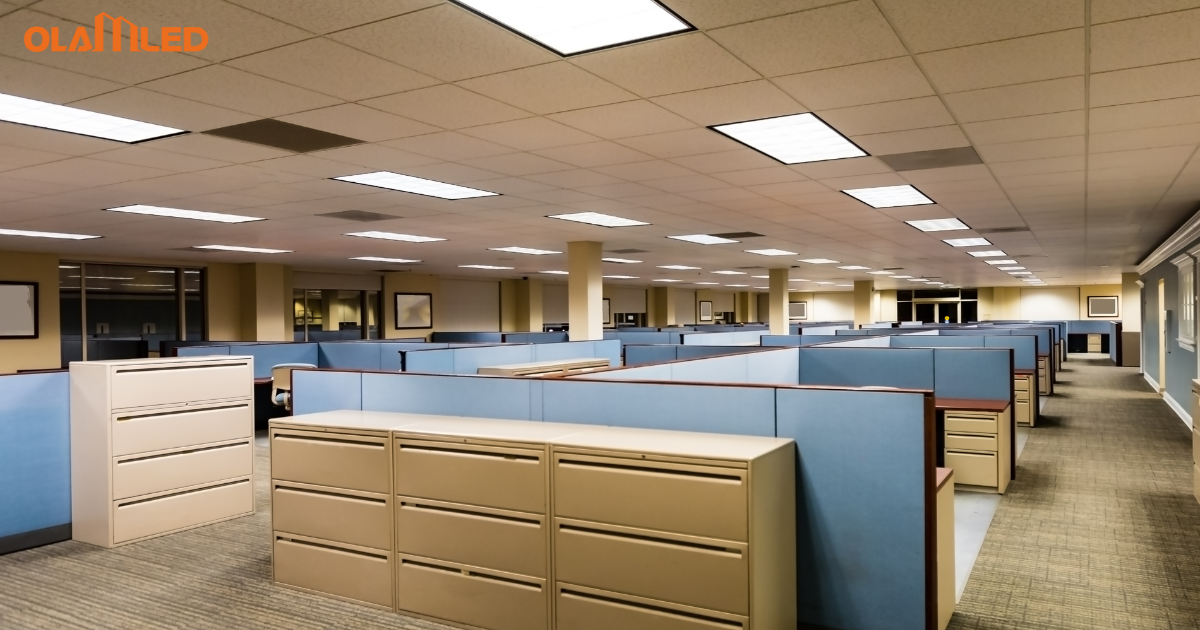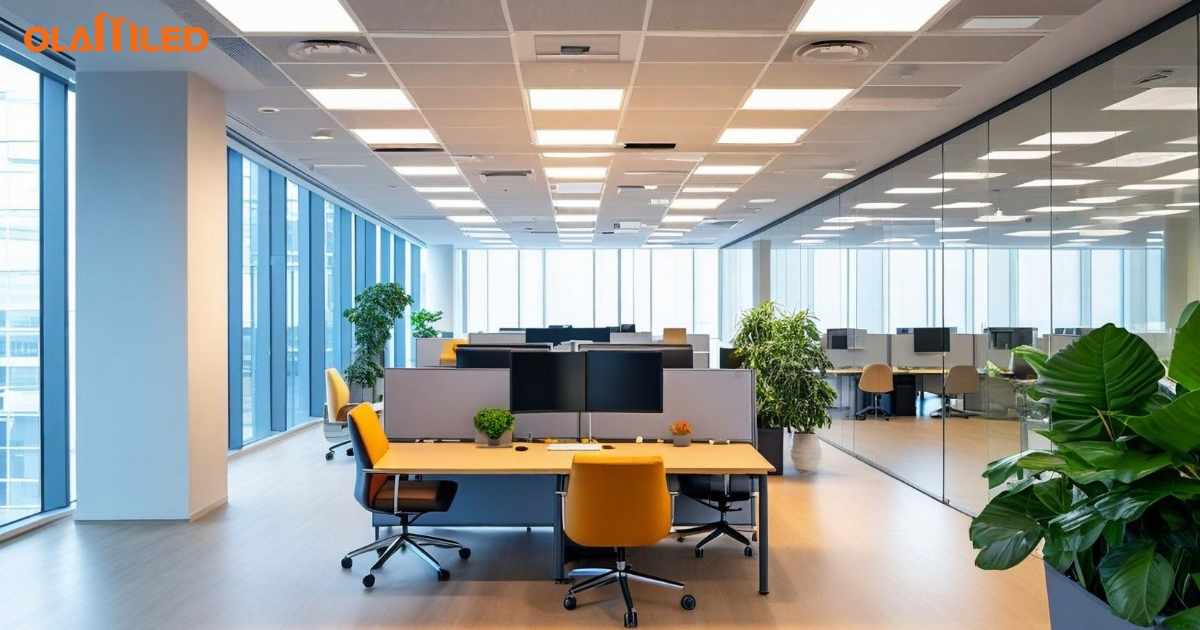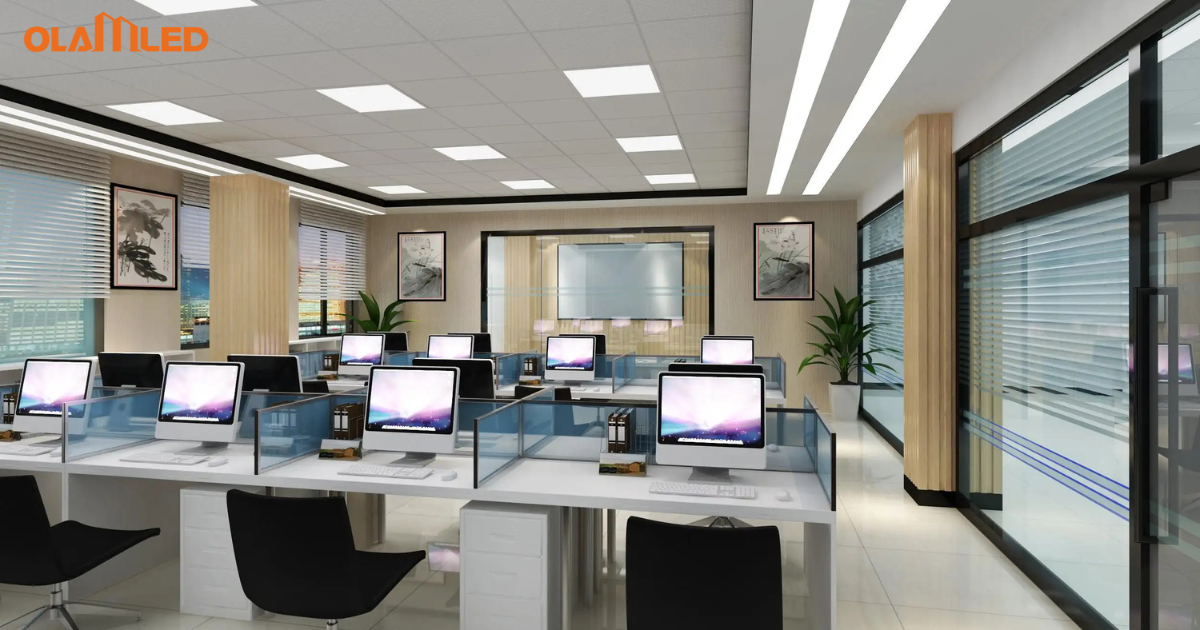Low glare LED panel lights transform office environments by reducing eye strain, boosting comfort, and cutting energy bills. Traditional fixtures often cast uneven, harsh light that leads to headaches, fatigue, and lost productivity. In contrast, low glare LEDs deliver uniform illumination that:
- Scatters light evenly across workspaces
- Eliminates bright spots and deep shadows
- Operates flicker-free
Key Benefits at a Glance
| Benefit | Impact on Office |
|---|---|
| Reduced Eye Strain | Fewer headaches, less fatigue |
| Energy Savings (up to 50%) | Lower utility bills, aligns with sustainability goals |
| Modern Aesthetics | Sleek fixtures enhance professional look |
Understanding Glare in Office Lighting
Glare arises when overly bright or contrasting light interferes with vision. There are two main types:
- Discomfort Glare – Annoying but doesn’t impair vision
- Disability Glare – Reduces ability to see details
Common Glare Sources
- Overhead fixtures without diffusers
- Reflections off glossy monitors or desks
- Direct sunlight through unshaded windows
By combining low-glare LED panels with simple measures—like adjustable blinds or anti-glare screens—offices can halve glare levels, supporting focus and reducing eye fatigue.
Enhancing Workspace Comfort with Low Glare LED Panel Lights

How Low Glare Lights Improve Employee Comfort
Low glare panels use microprismatic diffusers to spread light uniformly, avoiding sudden brightness changes. Benefits include:
- Flicker-Free Output: Eliminates headaches and migraines linked to strobing
- Consistent Brightness: Prevents hotspots that disrupt reading or screen work
- Color Stability: Maintains true color rendering over time
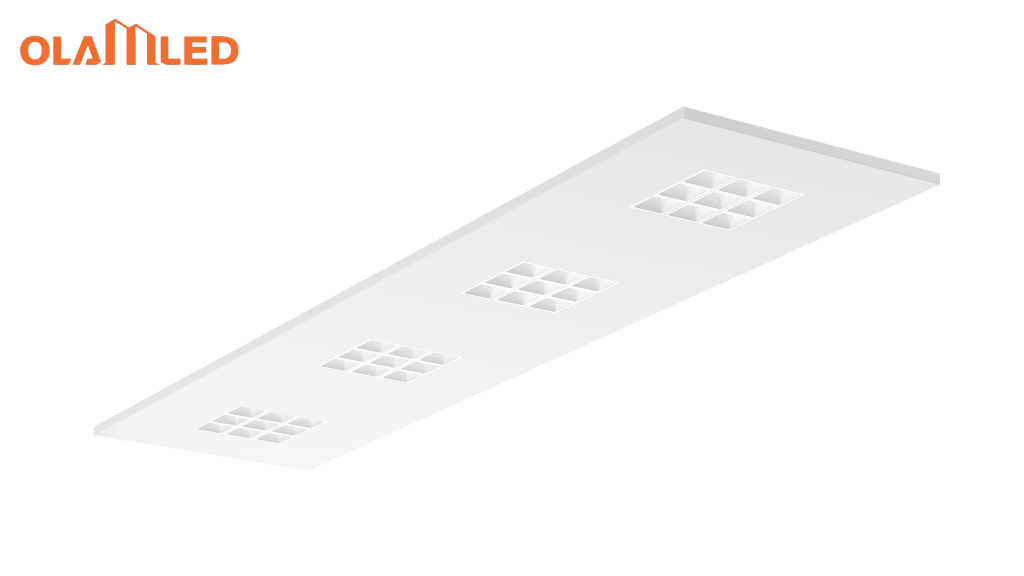
The Role of Unified Glare Rating (UGR) in Lighting Selection
UGR scores range from 10 (very low glare) to 30 (high glare). Recommended UGR values by area:
| Space Type | Recommended UGR ≤ |
|---|---|
| High-precision tasks | 13 |
| Open-plan work areas | 19 |
| Meeting and boardrooms | 16 |
Adhering to these thresholds ensures minimal visual discomfort and a healthier work environment.
Boosting Employee Productivity with Effective Lighting Solutions
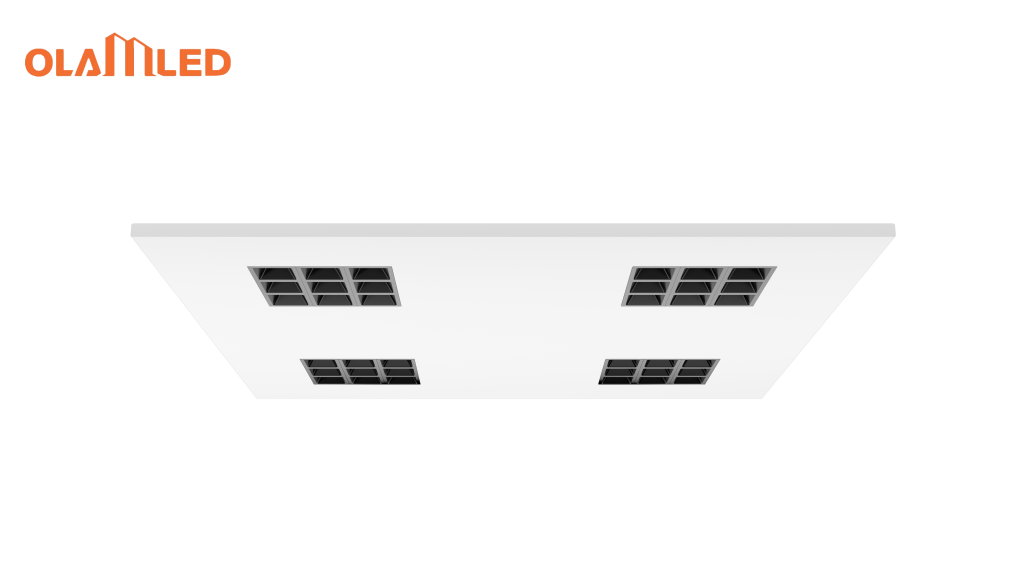
The Connection Between Lighting and Productivity
Natural daylight can increase productivity by 10–25%. In window-poor offices, well-designed LED lighting steps in to:
- Mimic daylight through cool-white color temperatures (4,000–5,000 K)
- Offer dimmable controls for task-specific tuning
- Simulate circadian rhythms to keep energy levels up
Case Study Snapshot
- Steelcase (USA): Installed tunable white, low-glare panels across open-plan areas. Outcome: 15% increase in reported focus and a 20% drop in glare-related complaints.
- Philips Lighting (Netherlands): Retrofitted its Eindhoven HQ with LED panels featuring microprismatic diffusers. Outcome: 12% energy savings and 18% higher employee satisfaction scores on lighting comfort.
- Google (Ireland): Upgraded its Dublin offices to 4000 K low-glare fixtures with dimming controls. Outcome: 10% reduction in sick days and measurable improvements in afternoon alertness.
- Herman Miller (USA): Deployed adjustable-brightness LED systems at its Michigan campus. Outcome: 22% fewer eye-strain grievances and positive feedback on post-lunch productivity.
- AECOM (UK): Switched to UGR < 19 LED panels in its London design studio. Outcome: 14% faster task completion times in CAD work and a notable uplift in creative collaboration.
Key Features of Low Glare LED Panel Lights That Enhance Focus
- Adjustable Brightness: Customizes light levels
- Uniform Distribution: Reduces eye jumps between light and dark areas
- Long Lifespan (25,000–50,000 h): Fewer replacements, less disruption
- Natural Color Rendering (CRI ≥ 80): Accurate colors, less visual distortion
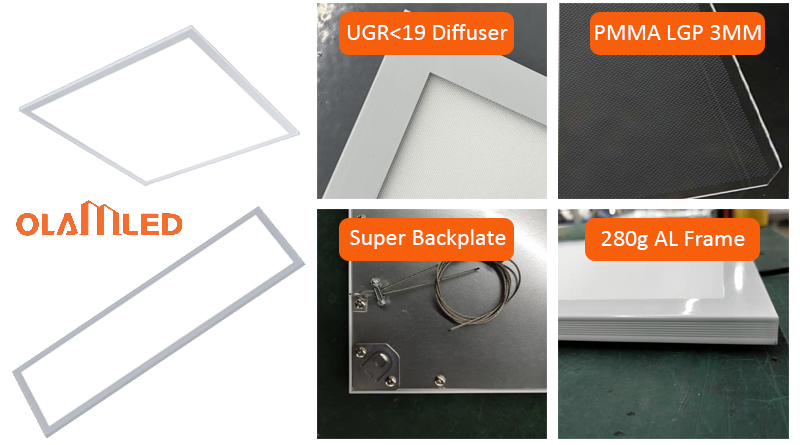
Energy Efficiency and Cost Savings of LED Lighting
Long-Term Benefits of Switching to LED Panel Lights
LED panels convert 80–90% of energy into visible light (vs. 10–40% for older technologies), resulting in:
- Up to 75% reduction in energy bills
- 25,000+ hours of operation before replacement
- Eligibility for rebates and tax incentives
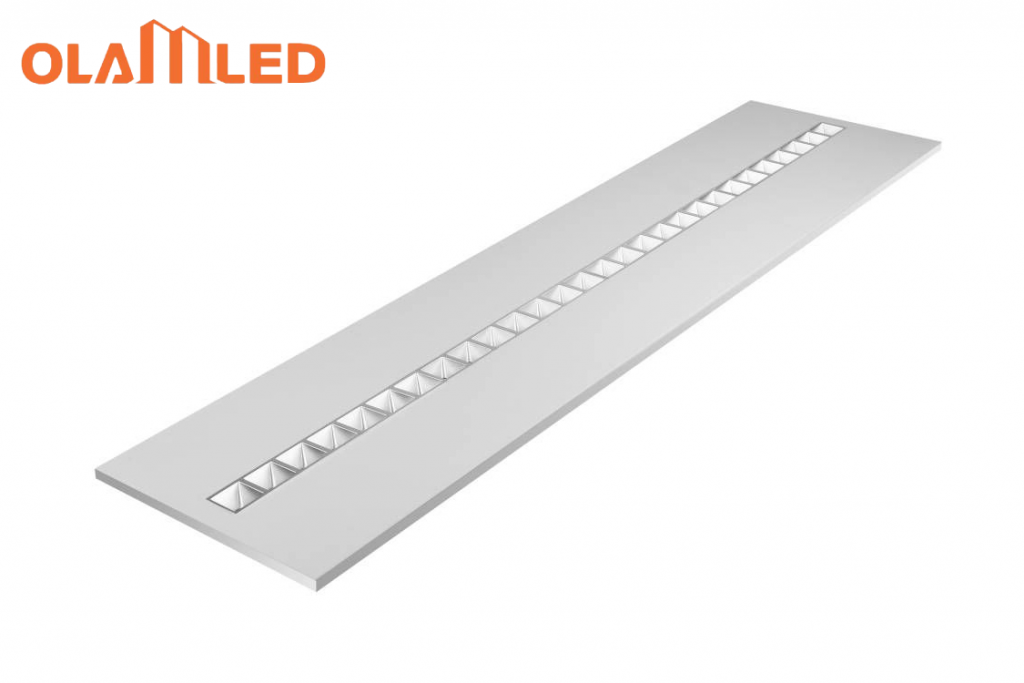
Comparing Energy Consumption: LED Panel Lights vs. Traditional Lighting
| Light Type | Wattage | Lifespan (h) | Efficiency (Light/Energy) |
|---|---|---|---|
| Incandescent Bulb | 40–100 W | 1,000 | 10–20% |
| Fluorescent Tube | 18–36 W | 7,000–15,000 | 30–40% |
| LED Panel Light | 10–40 W | 25,000–50,000 | 80–90% |
Aesthetic Considerations in Office Illumination
Creating a Positive Workspace Atmosphere
Layered lighting combines ambient LED panels with spot or accent lights to:
- Highlight architectural features
- Define zones (collaboration vs. focused work)
- Prevent the “cave effect” in open plans
Color Temperature Guide
- 2700–3000 K: Warm, relaxing (break areas)
- 3000–4000 K: Neutral, balanced (general office)
- 4000–5000 K: Cool, alert (task zones)
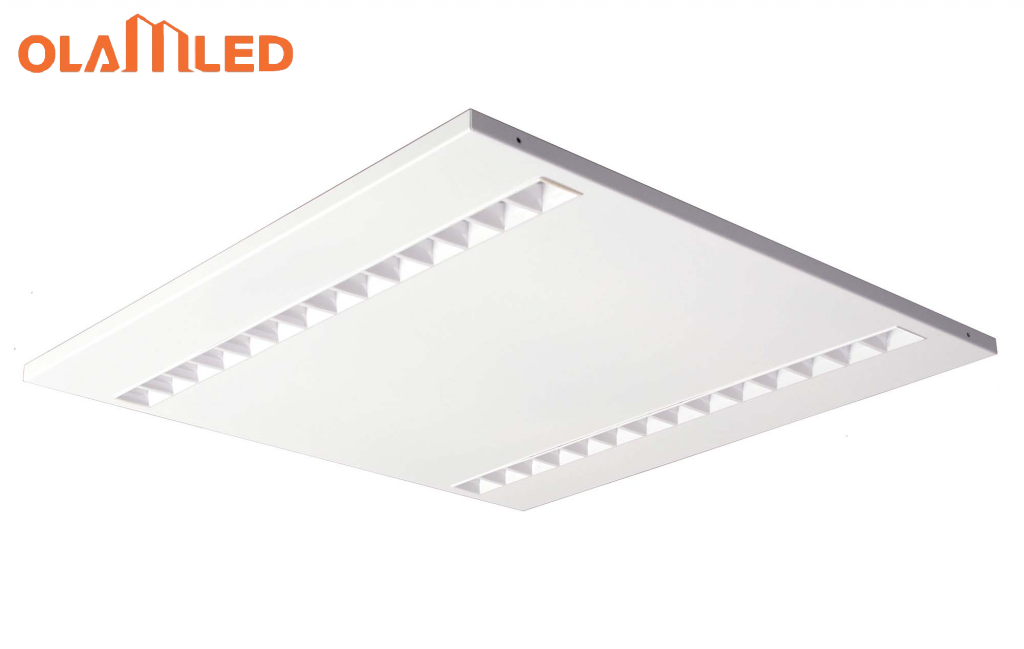
Dimmable LED Options for Versatile Lighting Needs
Preset modes allow quick transitions:
- Meeting Mode: Moderate brightness for group work
- Focus Mode: High brightness, cool tone for detail tasks
- Relax Mode: Low brightness, warm tone for breaks
How to Choose the Right Low Glare LED Panel Lights for Your Office
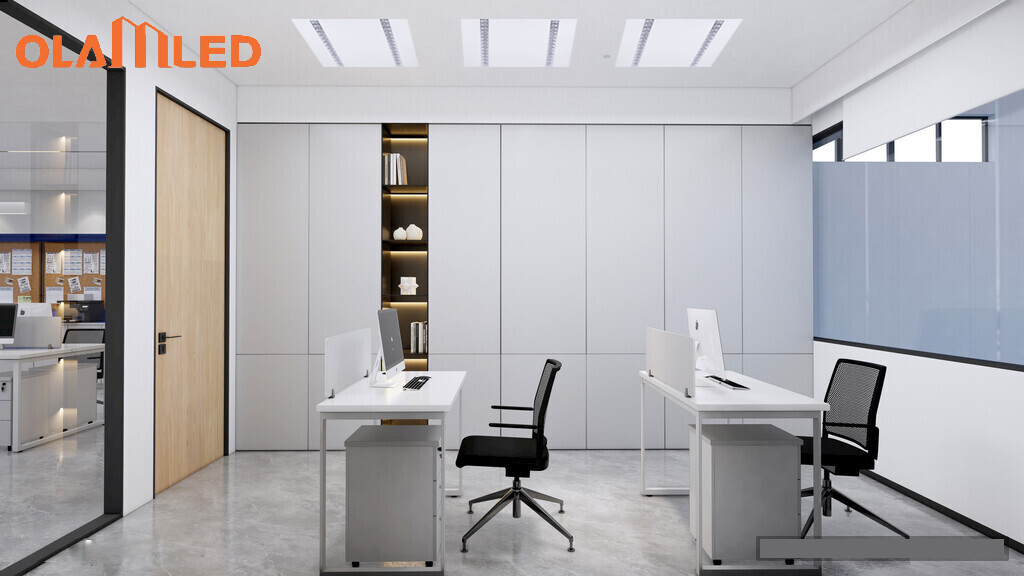
Assessing Brightness Requirements for Offices
Measure in Lux (lumens/m²):
- 300–500 Lux: Standard tasks
- 500–700 Lux: Meetings, reading rooms
- 700–1,000 Lux: Precision work
Aim for ≤ 20% variation across the room to avoid eye strain.
Implementing Glare Reduction Techniques in Workspace Design
- Desk Orientation: Position perpendicular to windows
- Window Treatments: Blinds or anti-glare films
- Indirect Fixtures: Uplights and wall washers
- Surface Choices: Matte finishes on furniture
- Regular Audits: Use light meters and employee feedback
Low Glare LED Panel Lights FAQs
What makes them “low glare”?
Microprismatic lenses and diffusers distribute light evenly, cutting hotspots.
Do they really reduce eye strain?
Yes—flicker-free drivers and balanced color temps (2,700–3,000 K) ease visual strain.
Is the upfront cost higher?
Often, but rebates (Energy Star, tax incentives) and lower operation costs yield faster payback.
How do they enhance ambiance?
High CRI and adjustable color temps let you tailor mood and productivity zones.
What should I consider at installation?
Ceiling type, dimmer compatibility, electrical capacity, and professional setup for safety.
